A Complete Guide On Women’s Health App Development 2025
For the last few years, FemTech – encompassing products, services, and software technologies focused on women’s health – has become a driving force in mHealth. This translates to a burgeoning market for applications dedicated to female health and wellness. According to Frost & Sullivan, the global FemTech market is poised to reach an astounding $225 billion by 2027. This signifies a surge in demand for innovative apps, with vast untapped potential within the market.
If you’re eager to make a difference in women’s health through technology, this article will guide you through the FemTech landscape, highlighting opportunities and providing a roadmap for developing successful Women’s Health App.
1. The Definition Of Femtech
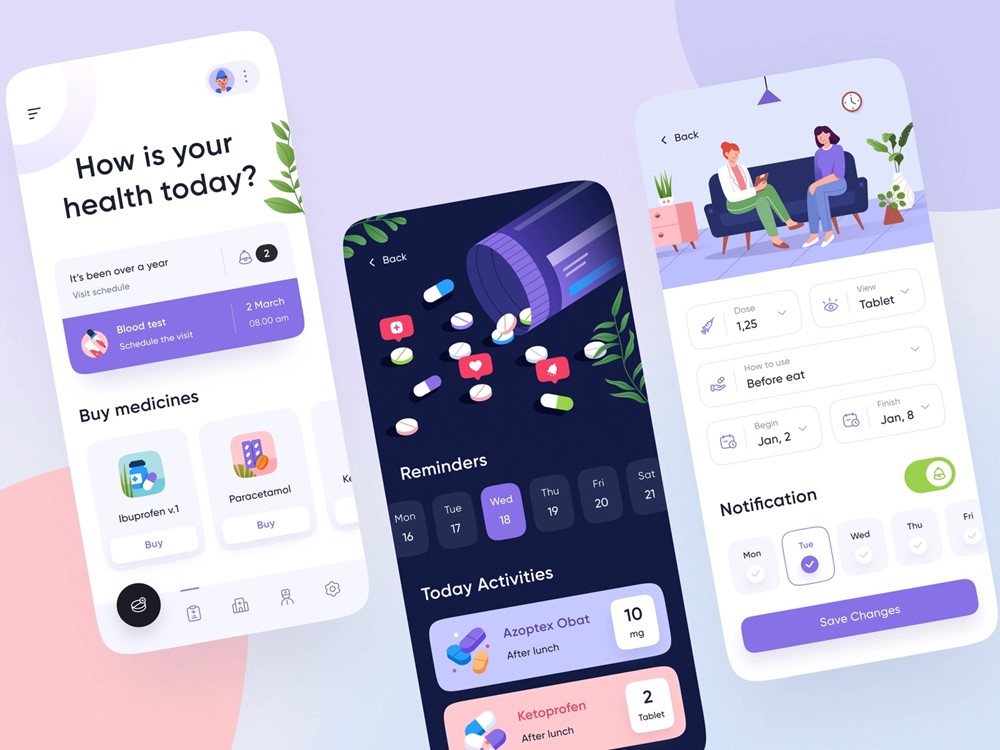
“Femtech (or female technology) is a term applied to a category of software, diagnostics, products, and services that use technology often to focus on women’s health.” – Wikipedia.
Simply put, Femtech leverages digital technology to empower individuals to access applications that address women’s health needs across various life stages. This includes areas like fertility solutions, period tracking, pregnancy and nursing care, sexual wellness, reproductive health, and chronic condition management. In essence, Femtech is about creating technology solutions that empower women in their healthcare journeys.
2. Growing Market Trend For Women’s Health Apps

Source: Appinventiv
FemTech has attracted significant investment, with over $25 billion poured into the sector globally. This reflects growing confidence in the market’s potential, particularly for those developing digital health solutions for women.
- Increased Funding: FemTech continues to attract substantial investment, with funding rounds reaching record highs in recent years. This influx of capital fuels innovation and supports the development of cutting-edge telehealth and wellness apps for women.
- AI Integration: Artificial intelligence is transforming FemTech, enabling apps to provide personalized insights, predict health risks, and offer tailored recommendations. For example, AI algorithms can analyze menstrual cycle data to predict fertility windows with greater accuracy or assess the likelihood of developing certain conditions like endometriosis.
- Market Expansion: The global FemTech market is on a trajectory of rapid growth, fueled by factors such as increasing smartphone adoption, rising awareness of women’s health issues, and a growing demand for personalized healthcare solutions. This growth presents a wealth of opportunities for developers of female-focused health and wellness apps.
- Consumer Spending: Women are increasingly taking control of their healthcare decisions and spending. This makes them a crucial demographic for FemTech companies and app developers seeking to create impactful digital tools for women’s health management.
FemTech empowers women with knowledge and tools to manage their health proactively. Apps addressing these needs are not just a fleeting trend; they are becoming an integral part of women’s self-care and wellness routines.
3. Benefits Of Women’s Health App
Women’s health apps offer valuable benefits to both users and businesses operating in the FemTech space:
Benefits of Women’s Health Apps for Businesses
- Niche Market Targeting: Focus on specific women’s health needs, such as fertility tracking, pregnancy support, or menopause management, allows businesses to cater to niche markets with less competition and a higher potential for user engagement with their digital health platforms.
- Demand-Driven Technology: Apps designed for women’s health and wellness address a clear demand for accessible and convenient healthcare solutions, offering developers a promising opportunity to create valuable and impactful products.
- High Return on Investment Rate: The potential for high ROI in FemTech is driven by the growing market demand and the ability to offer premium features, personalized plans, and subscription-based services within women’s health-focused mobile applications.
- Community Building: Apps centered around women’s health can foster supportive online communities, enabling businesses to connect with their users, gather valuable feedback, and expand their reach organically.
- High Mobile Engagement: Women tend to have higher engagement rates with mobile apps compared to men, making them a receptive audience for mobile health solutions.
Benefits of Female Health Apps for Users
- Health Monitoring and Record Keeping: These apps provide insights into various health aspects, including menstrual cycles, ovulation, fertile days, mood swings, weight management, mental health, and chronic conditions. This empowers women to understand their bodies better and make informed decisions about their health.
- Early Detection of Diseases and Infections: Femtech enables early diagnosis of potential health issues by providing access to real-time data and symptom tracking tools. This can lead to timely interventions and improved health outcomes.
- Convenient Access to Healthcare: Women can access healthcare services anytime, anywhere, through virtual consultations, telehealth features, and personalized health information. This is particularly beneficial for women in remote areas or those with limited access to traditional healthcare services.
- Confidentiality: Femtech apps prioritize data privacy and confidentiality, ensuring that sensitive health information is protected and handled responsibly.
- Fitness Tracking: Many women use female wellness apps to track their fitness goals, monitor their progress, and stay motivated. Some apps also offer personalized workout plans and nutritional guidance tailored to women’s needs.
4. Top 10 Popular Women’s Health App Types
| Women’s Period and Fertility Tracking App |
Breastfeeding App |
|
Pregnancy Tracker Apps |
Mother’s Community App |
|
Birth Control Apps |
Breast Health Control App |
|
Sexual Self Care |
Feminine Hygiene App |
|
Trainer Apps |
Online Consultation Apps |
- Women’s Period and Fertility Tracking App: These apps help women track their menstrual cycles, predict ovulation, and monitor their fertility. Examples include Flo, Clue, and Glow.
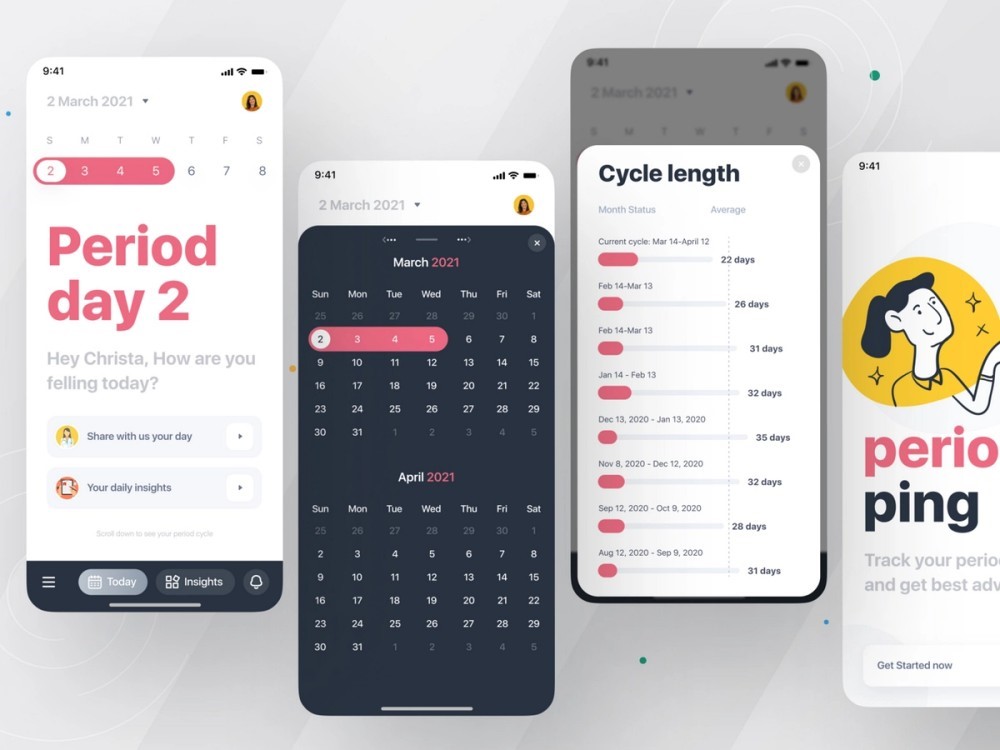
- Breastfeeding App: These apps provide support and guidance for breastfeeding mothers, offering information on latch techniques, milk supply, and baby’s growth. Examples include Lactapp and MyMedela.
- Pregnancy Tracker Apps: These apps guide women through their pregnancy journey, offering week-by-week updates on fetal development, health tips, and tools for managing pregnancy symptoms. Examples include Pregnancy Tracker—BabyCenter and Ovia Pregnancy Tracker.
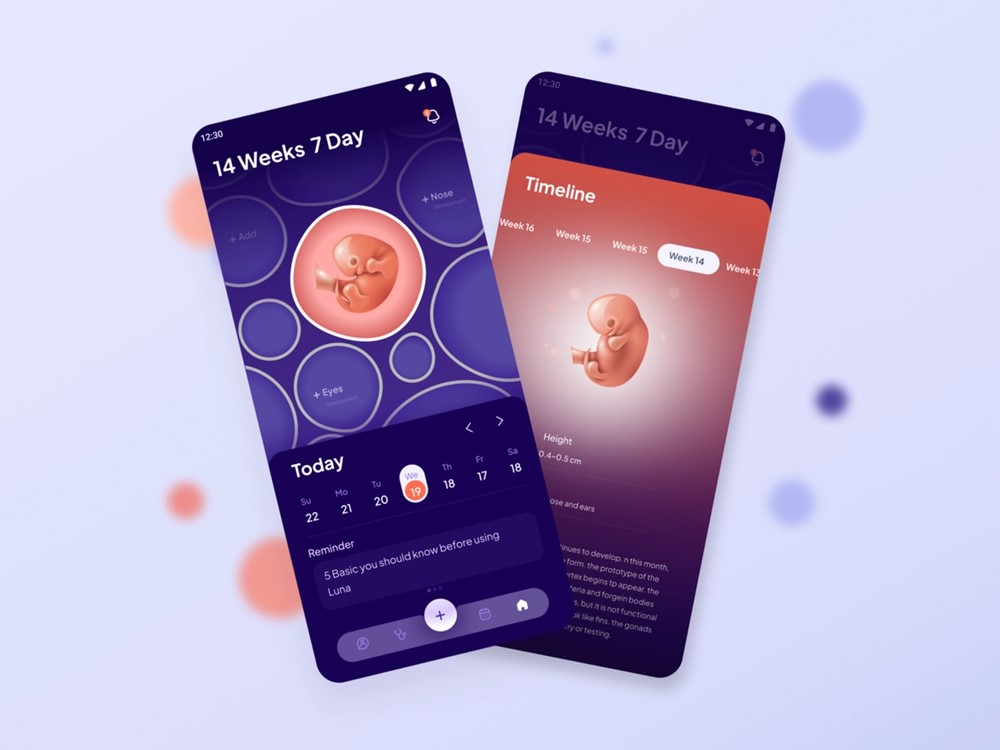
- Mother’s Community App: These apps connect mothers to build a supportive community, share experiences, and find answers to common parenting challenges. Examples include Peanut and WeMoms.
- Birth Control Apps: These apps help women understand their birth control options and track their usage. Some apps, like Natural Cycles, even offer a natural method of contraception by tracking fertility based on body temperature.
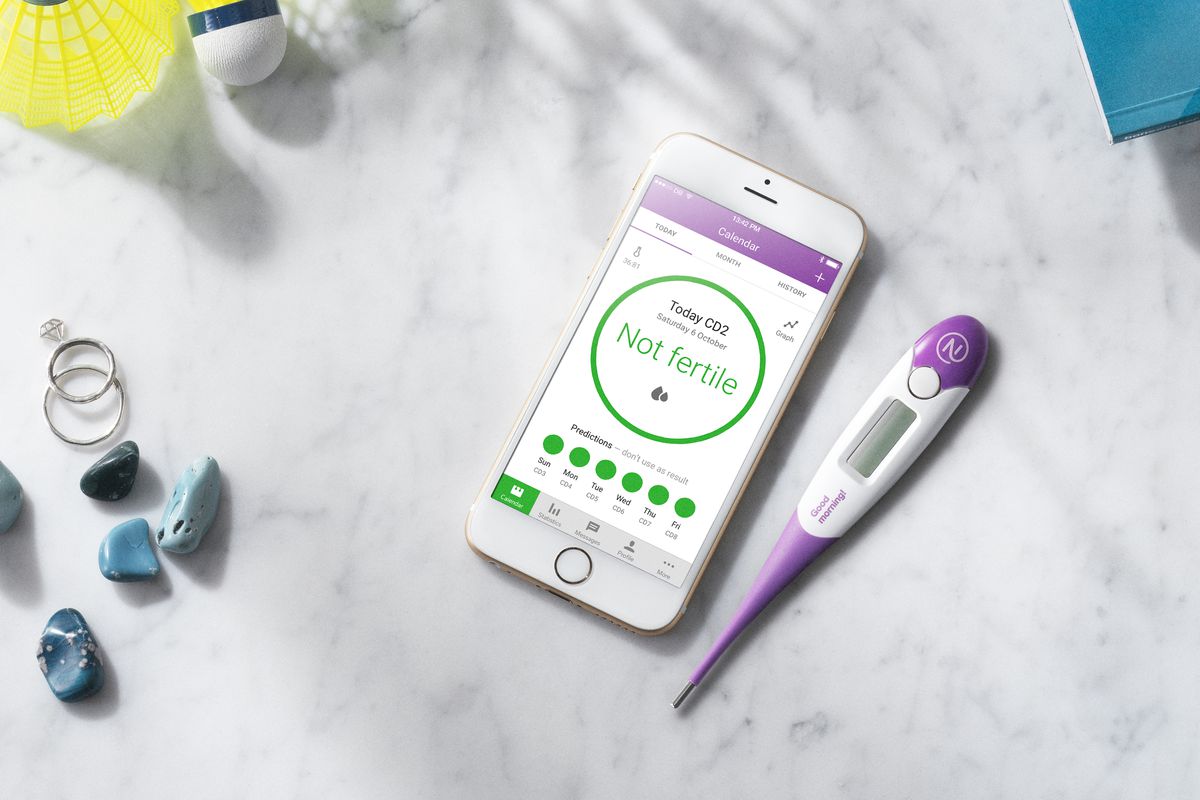
- Breast Health Control App: These apps raise awareness about breast health, provide self-examination guides, and encourage regular checkups. Examples include Know Your Lemons and Keep A Breast.
- Sexual Self Care: These apps focus on female sexual wellness, offering resources for exploring sexuality, improving body image, and enhancing intimacy. Examples include Ferly and Dipsea.
- Feminine Hygiene App: These apps provide information on feminine hygiene products, offer personalized recommendations, and may even facilitate the purchase and delivery of organic and sustainable products.
- Trainer Apps: These apps offer personalized workout plans, track fitness progress, and provide motivation for women to achieve their fitness goals. Examples include Aaptiv and 8Fit. When considering this category, it’s important to research fitness app development costs and partner with experienced fitness app development companies to ensure a high-quality product.
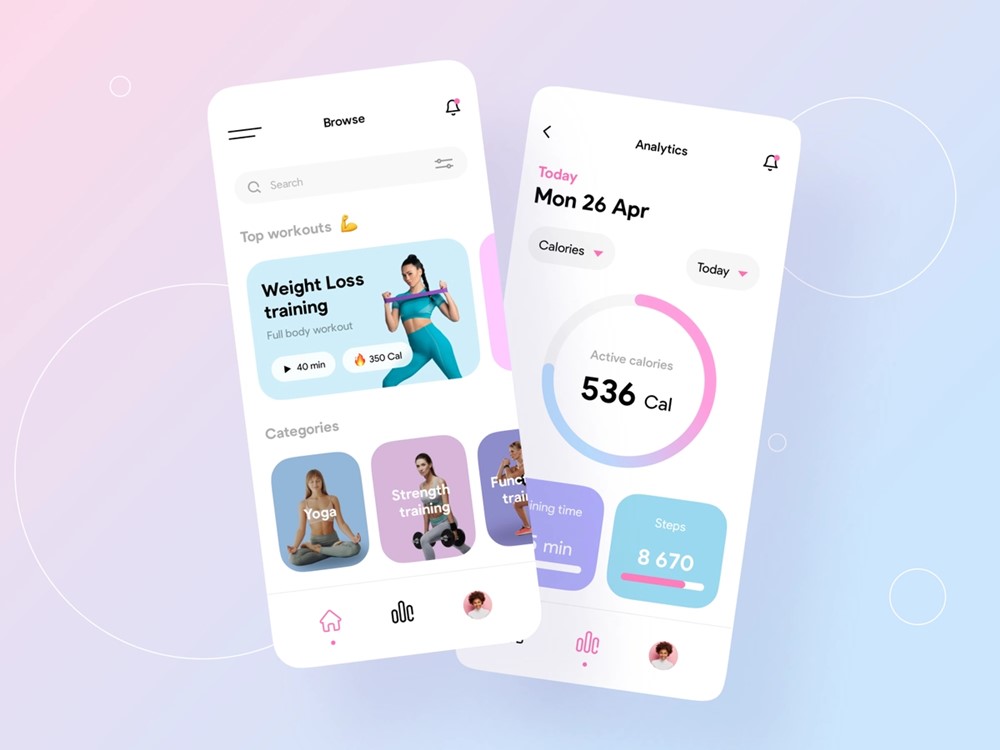
5. 05 Steps to Develop a Successful Women’s Health App
Step 1: Study the Competitors

Conduct a thorough analysis of your competitors to understand their strengths, weaknesses, and unique selling propositions. Identify opportunities to differentiate your app and offer something truly valuable to users in the competitive landscape of mobile health app development.
Step 2: Features to Include in Women’s Health Apps
Prioritize features based on your target audience and the specific needs you aim to address. Consider incorporating a mix of essential and innovative features, such as:
- Effortless Onboarding: Streamline the registration process and make it easy for users to create personalized profiles.
- Personalized Profiles: Allow users to input their health data, preferences, and goals to receive tailored insights and recommendations.
- Seamless Tracking: Provide user-friendly tracking tools for relevant health metrics, such as menstrual cycles, ovulation, pregnancy milestones, weight, mood, and symptoms.
- Community Connection: Foster a sense of community by incorporating forums, chat features, or support groups where users can connect with each other, share experiences, and ask questions.
- Expert Advice: Integrate telehealth features to enable virtual consultations with healthcare professionals, offering convenient access to medical advice and support.
- Smart Integrations: Connect with wearables and other health devices to gather comprehensive health data and provide a holistic view of the user’s well-being.
- AI-powered insights: Leverage AI algorithms to offer personalized predictions, risk assessments, and proactive health recommendations.
- Gamification: Incorporate game-like elements, such as challenges, rewards, and progress tracking, to increase user engagement and motivation.
Step 3: The Monetization of Women’s Health App
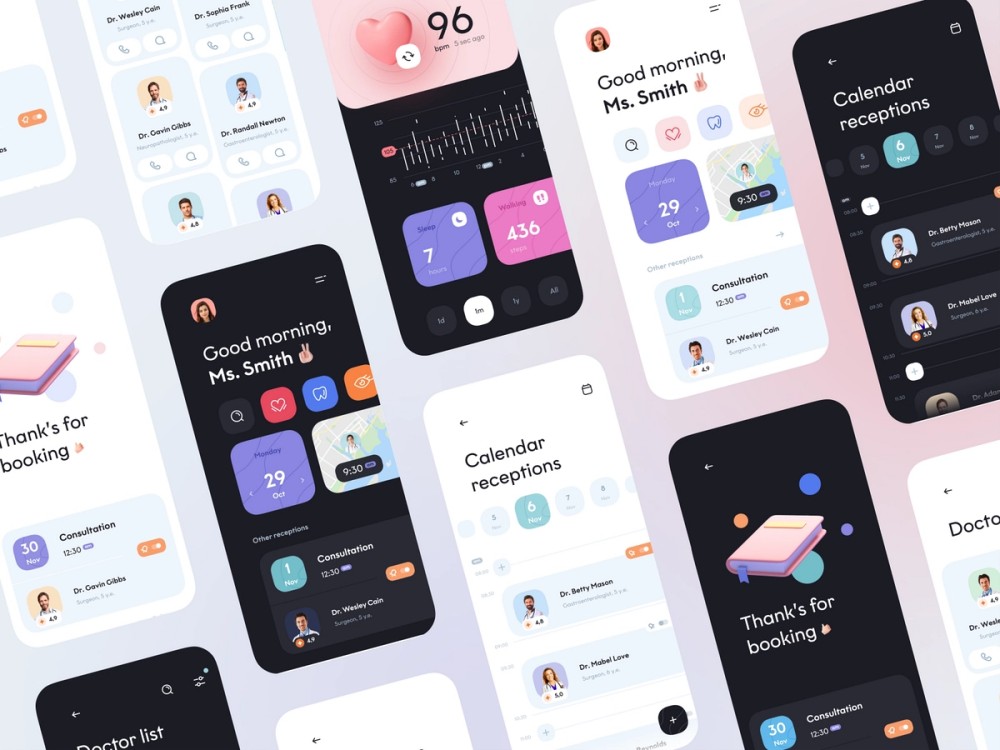
Explore various monetization strategies to generate revenue and ensure the sustainability of your app:
- Freemium Model: Offer a basic version of your app for free and provide access to premium features through in-app purchases or subscriptions. This allows users to try the app before committing to a paid plan.
- In-App Purchases: Provide additional content, personalized plans, virtual consultations, or premium features for a fee. This can be a good option for offering value-added services
Step 4: Test and Fix Bugs
Health apps for women should be tested by women, ideally in the context of real-life situations:
- How long does it take to load or process the data?
- Do users feel at ease using the interface?
These kinds of inquiries can help create a perfect user experience. Additionally, automated tests run by developers during the app development stage will help identify problems and fix them right away.
Step 5: Release and Maintain
After thoroughly testing your app, it’s time to upload it to the App Store and Google Play. You’d better seek advice from an experienced health app development team, as the app submission process can be a little intimidating. Normally, you should allocate at least a week for the app submission process
After your app is available on app stores, keep an eye on it using analytics tools like Google Analytics or Mixpanel. You will need to update the app as new mobile OS versions become available and add more enticing features.
Conclusion
The FemTech revolution is transforming women’s health, and mobile apps are at the forefront of this exciting movement. As the demand for innovative and user-centric women’s health apps continues to grow, developers have a unique opportunity to make a real difference in the lives of women worldwide. By understanding the trends, benefits, and key steps involved in developing successful women’s health apps, you can create solutions that empower women to take control of their health and well-being. Partner with experienced developers, prioritize user needs, and leverage the power of technology to build the future of FemTech – a future where women’s health apps play a central role in promoting healthier and happier lives.
Savvycom – Your Trusted Tech Partner
From Tech Consulting, Software Development Services to IT Outsourcing Services! Since 2009, Savvycom has been harnessing the power of Digital Technologies as a leading software development company that support business’ growth across the variety of industries. We can help you to build high-quality software solutions and products as well as deliver a wide range of related professional services.
Savvycom is right where you need. Contact us now for further consultation:
- Phone: +84 24 3202 9222
- Hotline: +84 352 287 866 (VN)
- Email: [email protected]
05 Steps to Develop a Successful Women’s Health App?
Step 1: Study the Competitors
Step 2: Features to Include in Women's Health Apps
Step 3: The Monetization of Women’s Health App
Step 4: Test and Fix Bugs
Step 5: Release and Maintain
04 Things Worth Attention When Developing Women’s Health App?
- Data Security
- Workflow Automation
- Mono & Multifunctionality
- Educational Content
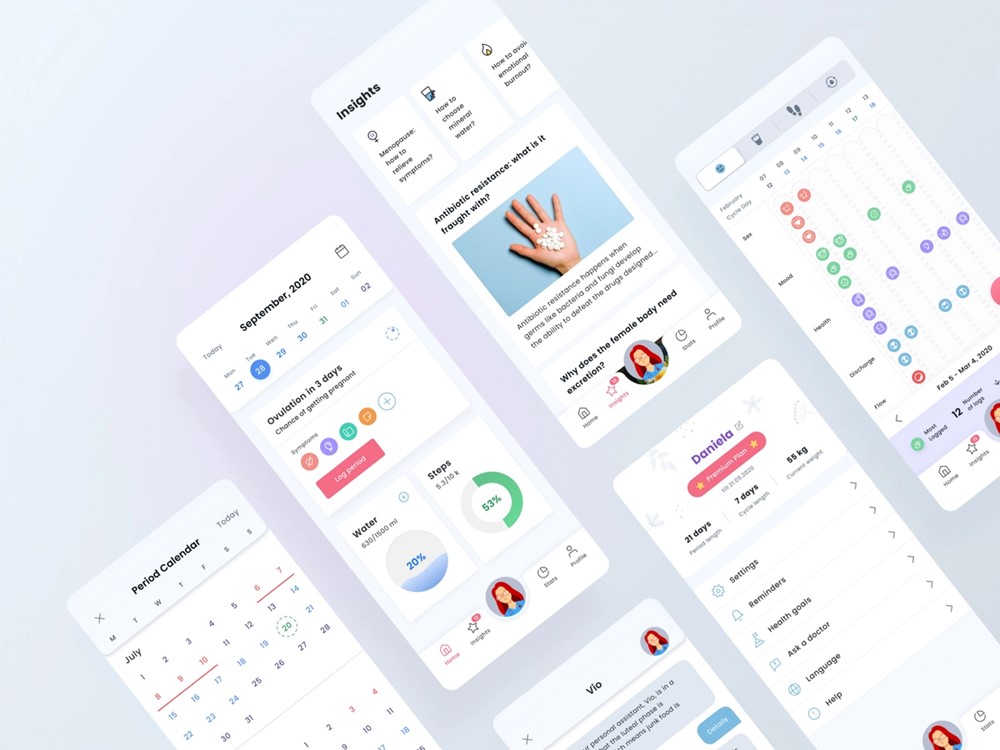
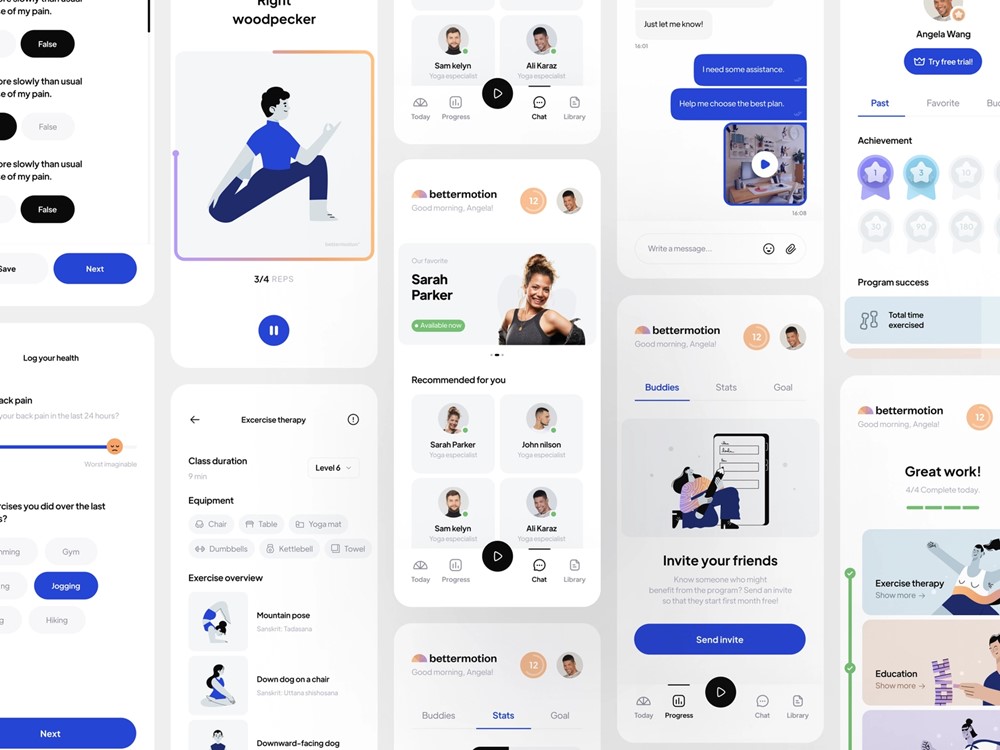

![Cyber Security Vs Software Engineering: Understanding The Difference - [2025]](https://savvycomsoftware.com/wp-content/uploads/2024/04/Coding-Enterprise-Future-What-is-Software-Development-3-150x150.png)
